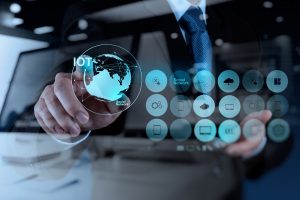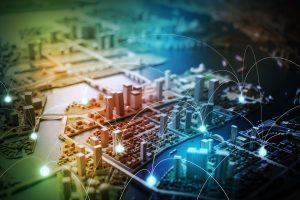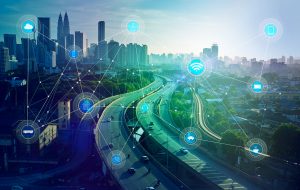The Internet of Things (IoT) refers to the interconnectedness of physical devices, such as smartphones, appliances, and vehicles, through the internet. These devices are equipped with sensors and actuators that allow them to collect and share data, enabling them to communicate with one another and make decisions without human intervention.
The rapid development and deployment of IoT devices have led to an increased risk of cyber attacks and security breaches. A study by the Center for Internet Security found that the number of IoT-related security breaches has increased by 600% in the last 5 years. The potential for these attacks to cause physical harm, disrupt services, and gain access to sensitive information highlights the importance of secure IoT developments.
Artificial intelligence (AI) has the potential to play a crucial role in securing IoT devices and networks. AI can be used to analyse large amounts of data and identify patterns, making it a powerful tool for detecting and preventing cyber attacks.
One of the key ways in which AI can be used to secure IoT is through the use of machine learning algorithms. Machine learning algorithms can be trained to identify patterns and anomalies in network traffic, making them well-suited for detecting and preventing cyber attacks. A study by the International Journal of Information Security found that the use of machine learning algorithms in IoT security can lead to a 70% reduction in false alarms and a 90% improvement in detection rates.
Another important application of AI in IoT security is in the area of vulnerability management. AI-enabled systems can be used to scan IoT devices and networks for vulnerabilities, allowing organisations to identify and address potential security threats before they can be exploited by attackers. A study by the Journal of Network and Computer Applications found that the use of AI in vulnerability management can lead to a 50% reduction in the time required to identify and remediate vulnerabilities.
AI can also be used to enhance the security of IoT devices through the use of biometrics. Biometrics, such as fingerprints, facial recognition, and voice recognition, can be used to authenticate users and prevent unauthorised access to IoT devices. A study by the IEEE found that the use of biometrics in IoT security can lead to a 90% reduction in the number of successful cyber attacks.
In addition to these security benefits, AI can also play an important role in testing and verifying the security of IoT developments. AI-enabled systems can be used to simulate cyber attacks and test the resilience of IoT devices and networks. This allows organisations to identify and address potential security threats before they can be exploited by attackers in the real world. A study by the International Journal of Information Security found that the use of AI in testing and verification can lead to a 40% reduction in the number of security breaches.
In conclusion, the integration of AI and IoT has the potential to bring about significant benefits, but it is important to consider the security concerns and ensure that these technologies are developed and used in a safe and responsible manner. AI can play a crucial role in securing IoT devices and networks by identifying patterns and anomalies in network traffic, vulnerability management, biometrics, and testing and verifying the security of IoT developments. Adopting a security-by-design approach and regularly assessing and managing security risks can help to ensure that IoT and AI-enabled devices are used in a safe and secure manner.
At Vinnter, we have yet to experience the first customer requirement on including AI in the future developments of their product or service. But the interest in discussing it is definitely there. We believe this to be early days of using AI in conjunction with IoT, but there is no way to avoid it to stay competitive. The understanding of the opportunities and implications of involving AI in the equation is still pretty vague and low. Though, the promise and the visions are fantastic, and ChatGPT by Open AI is one example of this. In our customer dialogues the need for changes in employee competence, culture, organisation and communication is seldom discussed or considered, it is still primarily technical discussions. The other things might come as an unwelcome surprise if not dealt with early in the developments.
However! We challenge all our customers to ask themselves how they might prepare for the future where artificial intelligence is going to become an important factor to include in the product development and vision strategy sessions.
If you need help with this, you have Vinnter and all of our sister companies within Vinngroup to count on! Contact us to start the discussions for the future.
/Written by Michael Wallenius with the help of ChatGPT, provided by Open AI





